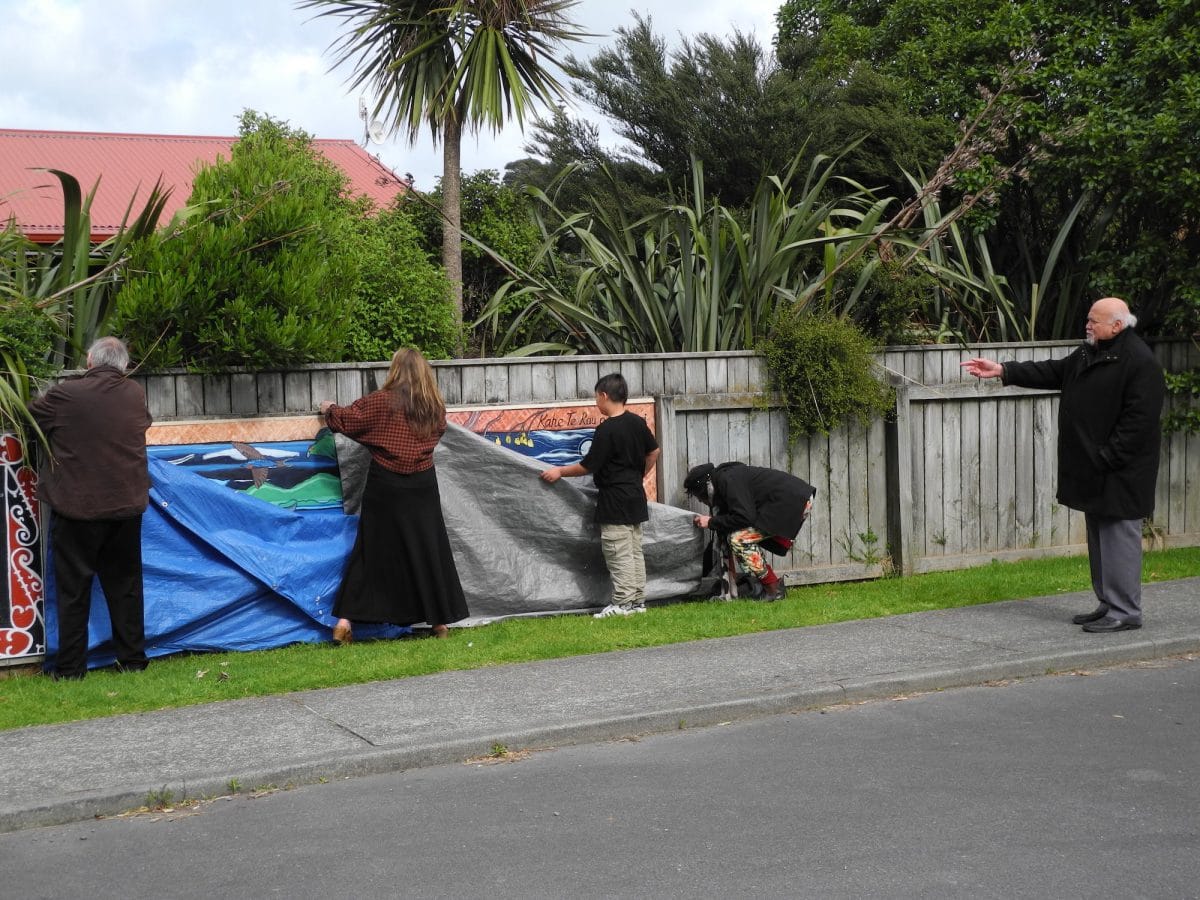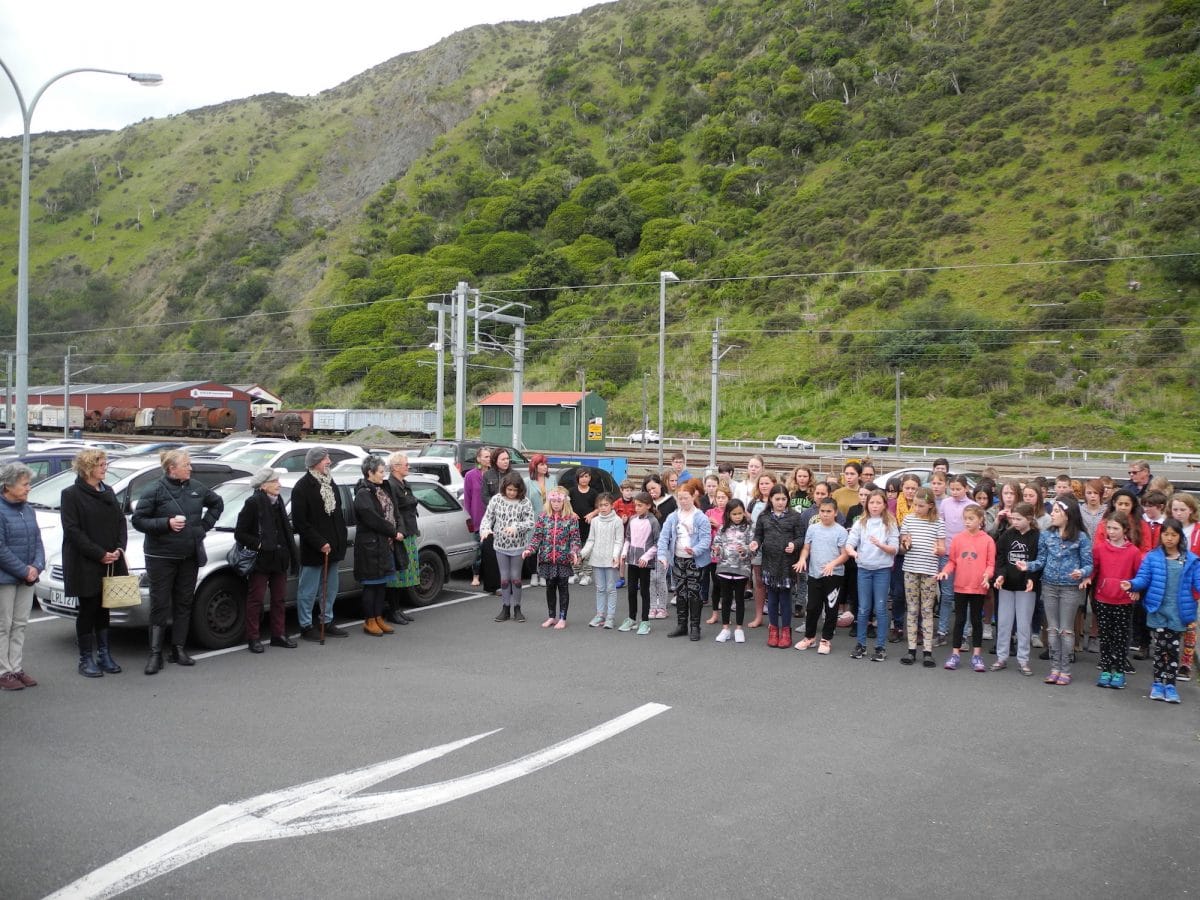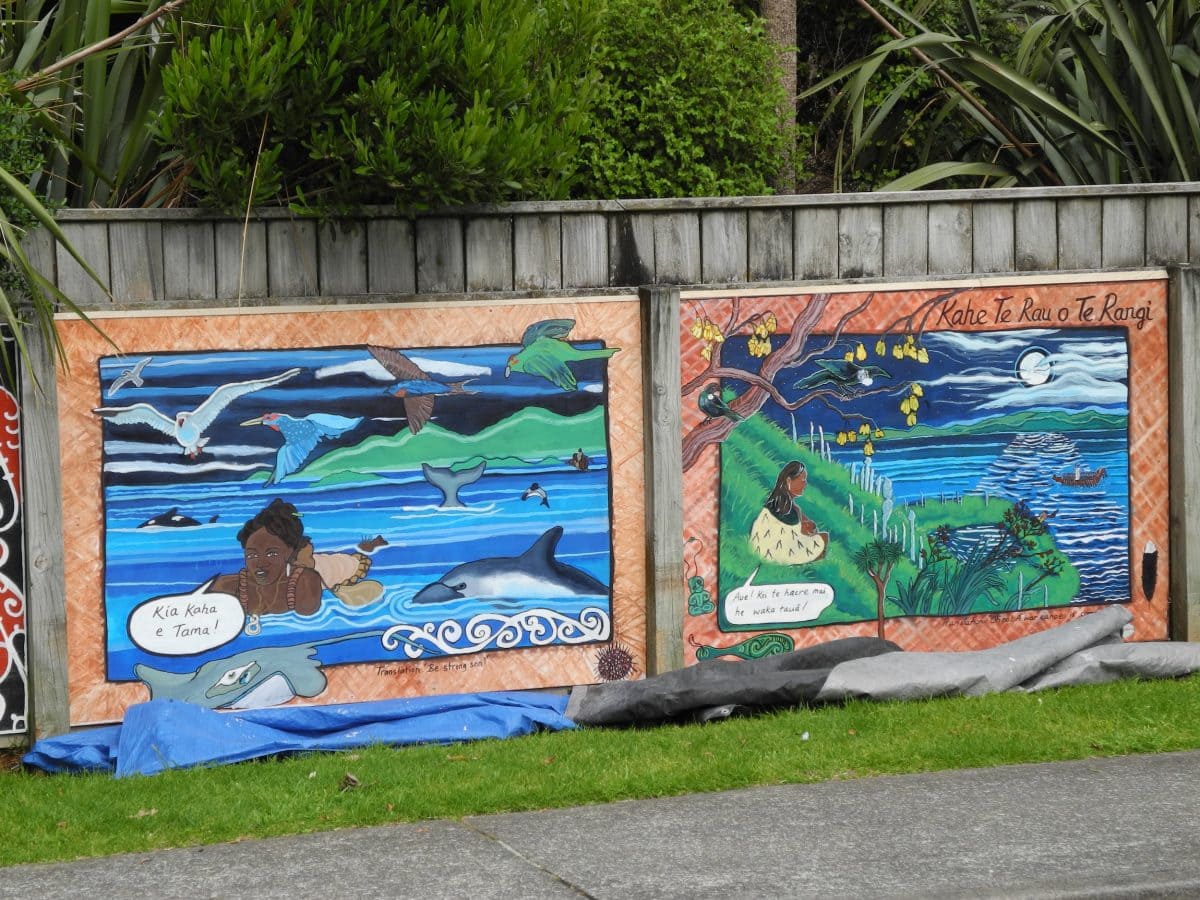On Monday 23 September, more than 50 Paekākāriki School students along with community artist, Rachel Benefield, were at the unveiling of their two newest panels celebrating the story of Paekākāriki’s famous wāhine, Kahe Te-Rau-o-te-Rangi.
School children have been working with Rachel Benefield to create the mural which sits along the north wall of the Paekākāriki Station car park. Two reasons for great excitement at the unveiling were, first, that the two latest additions to the mural feature Kahe herself, and, second, that Kahe’s own descendants and Ngāti Haumia relatives were at the event. One young girl, named after Kahe, was there from Australia. Queenie Rikihana-Hyland (Toa Rangitira, Raukawa ki te Taonga, Te Atiawa ki Waikanae), author of Mana Wāhine, stories of four strong Māori women which inspired the panels and Dave Johnson (of the Station Museum Trust), helped take down the covering from the paintings.


The four earlier panels depict Miriona (Kuia of Paekākāriki), Pouawhā (the mountain), Haumia (the iwi) and Wainui (the river). These are also the four houses of Paekākāriki School.
The two new panels show Kahe sitting on a bank on Kāpiti, feeding her baby and looking out to sea. She has been left with the old people and children while the men are on the mainland. She notices a waka taua in the distance and realises that this is a raiding party coming to attack Ngāti Toa. She straps her baby to her back and, as shown in the second panel, she leaps into the freezing cold water, and swims five kilometres to the shore to warn Ngāti Toa warriors. They fight off the attackers, and Kahe is celebrated as the saviour of the iwi.

This incident happened in 1824. In the 1830s Kahe married a Scottish whaler, John Nicol, and the couple would mount whaling expeditions off Kāpiti. Eventually they moved to Paekākāriki, where Kahe owned land, and they opened an inn serving those who travelled up and down the coast. Kahe’s daughter described her as a ‘strong woman of great muscular strength and endurance.” Kahe was reputed to have been six feet tall, and is said to have challenged men to swimming races well into her fifties. She had six children, and Sir Maui Pōmare (1875-1930), a prominent New Zealand doctor and politician was one of her grandchildren.
Dave Johnson explained that the idea for the mural was conceived four or five years ago and was supported by the Wellington Community Trust. Rachel Benefield, the artist who has been working on the project with the school children, said it was an amazing project.
“I am honoured to have been part of this. I had heard Kahe’s story about 18 years ago, and have always thought she was a wonderful model for young girls. She demonstrated strength and willpower and love for her people. I am very proud of the children who have contributed to this project.” — Rachel Benefield

Rachel said she loved being a community artist. She has also undertaken project with communities in Porirua, Titahi Bay and Cannons Creek. She says, “if someone buys a painting and puts it on their wall, it’s wallpaper. If the local people are involved in painting a public mural, then the whole community gets a lift – something of enduring value!”
Janet Holborow, KCDC Deputy Mayor, thanked Rachel for her dedication to the project, and also the Paekākāriki Station Museum Trust. The mural forms part of the Paekākāriki Arts Walk. The Station Museum Trust has slowly been creating the walk around the village to showcase local poets and budding artists.
The unveiling was followed by a sumptuous morning tea at Paekākāriki School.


